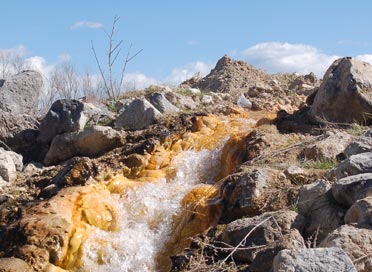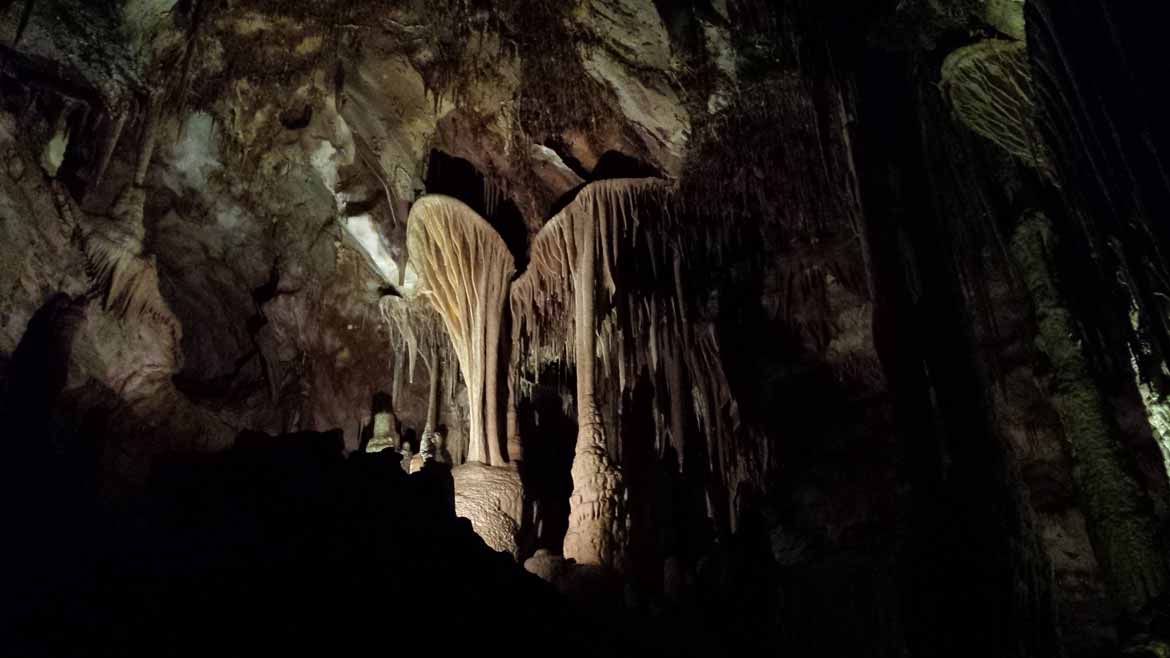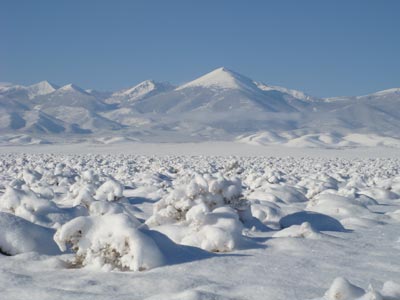

Traveling north towards Cherry Creek, Nevada, along the old shelf road on the west side of Steptoe Valley, ranches can be seen scattered here and there marked by a small stand of trees. Several places have trees but no longer have any buildings. Monte Neva Hot Springs is one of these sites. This fascinating spring is on private land, but we hope to include it in our hydrology field trip with the owner's permission. Image provided by Matt Bowers, Third Media.
We're still working out the details for this trip. Please check back as we get closer to our event dates.
Both of our field trip options will be self-driving and depart from the Bristlecone Convention Center on Wednesday morning. Lunch will be provided. No technical gear will be required. A full itinerary will be included in your program book and on-site interpreters will be stationed at established stopping points. Groups will return to the convention center in early evening.
Poster sessions and a social networking event are planned at the convention center upon our return.
Nevada's Great Basin is known for its diverse geothermal features, including numerous hot springs that showcase unique geochemical characteristics. The region's hot springs are often associated with tectonic activity related to the extension of the Earth's crust, as the Great Basin is characterized by active faulting and stretching. The geochemistry of these hot springs reflects the complex interactions between subsurface geological processes and the circulation of groundwater.
One notable aspect of hot spring geochemistry in Nevada's Great Basin is the presence of various minerals and elements dissolved in the thermal waters. These hot springs often contain high concentrations of silica, carbonate minerals, and trace elements picked up from the surrounding rocks during the water's journey through the Earth's crust. The specific composition of the hot springs can vary widely from one location to another, providing valuable insights into the geological conditions and rock formations in the region.
Furthermore, the temperature and pH of Nevada's Great Basin hot springs can vary, influencing the types of microbial life that thrive in these environments. Microorganisms adapted to extreme conditions, known as extremophiles, are often found in the hot springs, contributing to the overall ecosystem. The microbial communities play a role in shaping the geochemical signature of the hot springs, as they interact with the dissolved minerals and can influence the precipitation of certain mineral deposits.
Hot spring geochemistry in Nevada's Great Basin is of interest not only for its geological significance but also for potential applications in geothermal energy production. Understanding the composition and behavior of thermal waters in the region is crucial for assessing the feasibility of harnessing geothermal resources for sustainable energy production. Researchers and scientists continue to study the geochemistry of these hot springs to gain a deeper understanding of the Earth's subsurface processes and to unlock the potential for clean and renewable energy sources in the Great Basin.

Lehman Caves is one of the largest and most dazzling cave systems in the Silver State and has been stunning visitors since the 1800s. This immaculate cave system was discovered by Absalom Lehman in the late 1880s after experiencing an uncharacteristically cool breeze coming out of the ground. Image provided by the Nevada Commission on Tourism.
Learn MoreThe official event schedule for the 2025 NCKMS has now been updated. Please check our schedule page or download a PDF to your mobile device.

In July of 1986, Life magazine dubbed Nevada's Highway 50 the "Loneliest Road in America." The article claimed there were "no points of interest" along the route and "warned" readers not to risk traveling it unless they were confident of their survival skills. However, Nevada adventurers knew better then - and still do. Sure, a road doesn't get much more wide-open than Highway 50. But that's exactly why we dig it!

Precipitation patterns are highly variable in Great Basin National Park. The wettest year on record at Lehman Caves was 21.2 inches of precipitation in 1982 and the driest year was 7.4 inches in 1953.

WCC Ball Cap
Wearing a ball cap? Oh, that's a whole vibe. It's like saying, "I'm strong, but I'm not here for your speleo-approval." It's the kind of quiet power that doesn't scream for attention, but when it walks into the room, everyone knows it's the real deal. No need to flaunt or flex when you've got that kind of effortless strength, right?
Yet, while being grounded and focused on what truly matters, you can still shine at your next grotto meeting by declaring your subtle support of the Western Cave Conservancy!